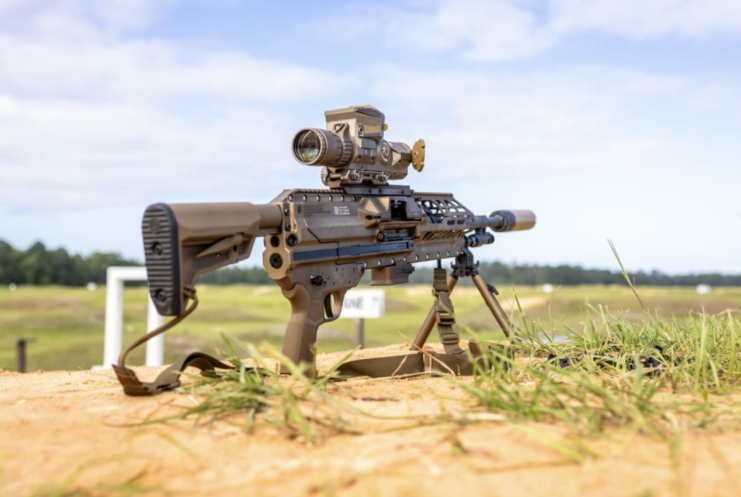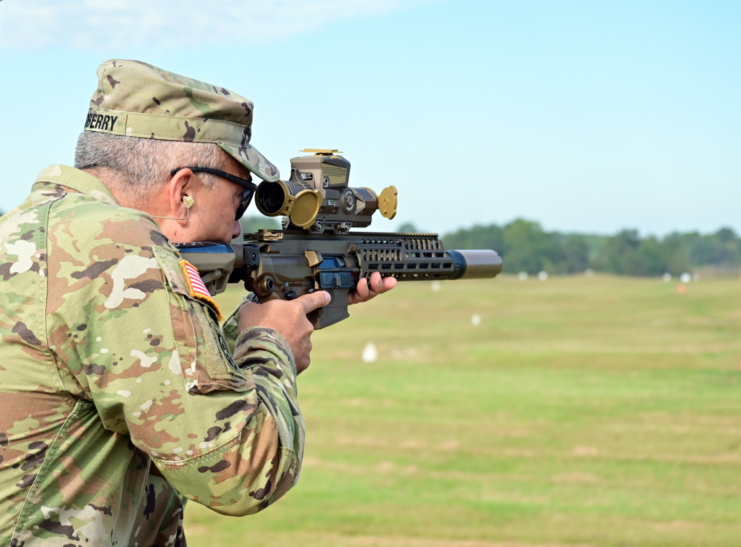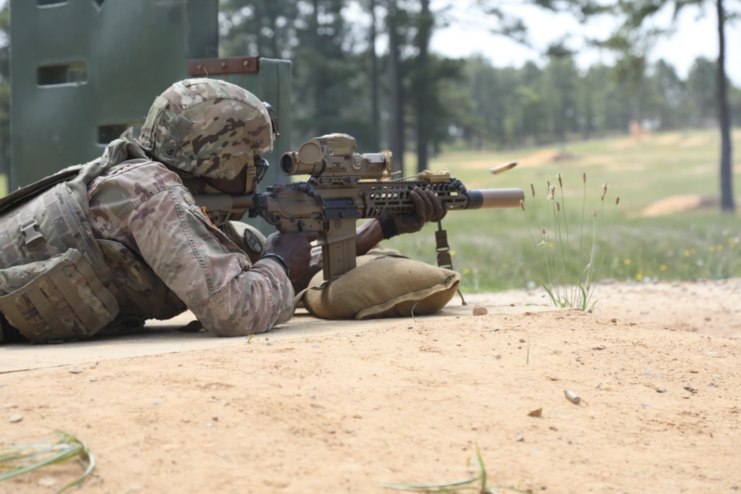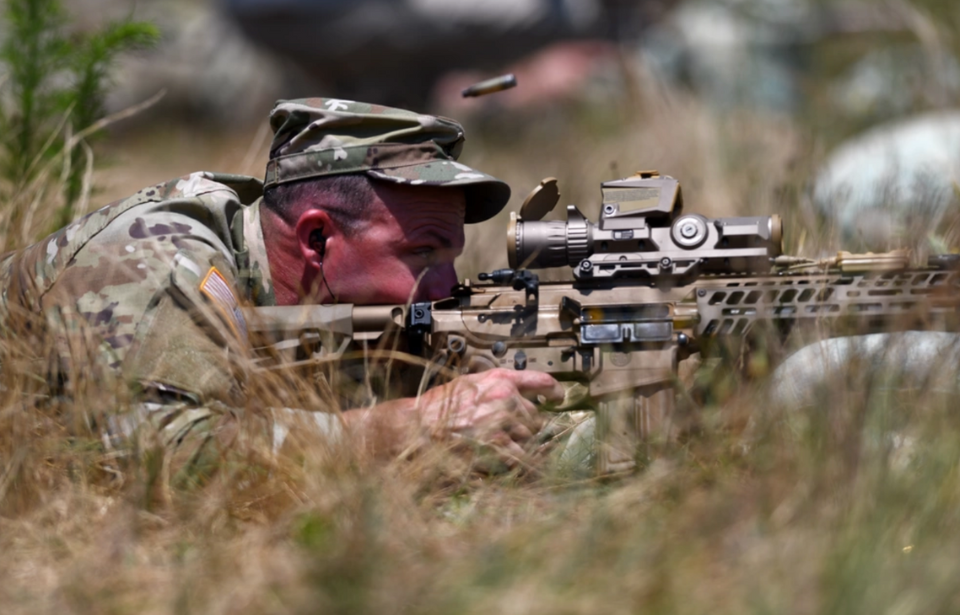Set to replace the M4 as the U.S. Army’s new standard-issue rifle, the XM7 represents a defining leap in American military firepower. Developed under the Next Generation Squad Weapon (NGSW) program, it was engineered to meet the evolving challenges of 21st-century combat—where precision, range, and adaptability are paramount.
Designed for both close-quarters fighting and long-range precision, the XM7’s performance bridges the gap between a carbine and a designated marksman rifle. Its introduction signals more than just an equipment upgrade—it marks a strategic evolution in how U.S. forces fight, emphasizing increased lethality, soldier protection, and battlefield dominance. For today’s warfighter, the XM7 isn’t simply a replacement—it’s the embodiment of the Army’s future edge in combat.
Why was the XM7 developed?

As aforementioned, the XM7 was developed as part of the Next Generation Squad Weapon program, which aims to replace both the M4 Carbine and the M249 Squad Automatic Weapon. While launched in 2019, the desire to give troops a newer weapon for combat had emerged during the War in Afghanistan, as it was found the 5.56 x 45 mm NATO rounds used by both guns couldn’t penetrate body armor or barriers from longer distances.
Among the companies to submit designs was SIG Sauer, which received a 10-year contract from the US Army in 2022 to provide a replacement for the M4 (XM7 rifle) and the M249 (XM250 light machine gun). The former is based on the gas-operated, magazine-fed SIG MCX-Spear, and it notably chambers the newer 6.8 x 51 mm Common Cartridge, which provides both a greater range and lethality; it has an effective range of 600 meters, which is twice that of the 5.56 mm NATO.
XM7 specs.

The XM7 introduces a range of state-of-the-art upgrades that represent a significant jump from the M4 Carbine. Built as a gas-operated, semi-automatic weapon, it’s engineered to perform across multiple combat roles while accepting advanced optics, suppressors, and a broad range of tactical accessories so the platform can be tailored to mission needs. Its enhanced fire-control features make switching between engagement modes fluid—an important benefit in close, chaotic fighting.
What do soldiers think?

The XM7 began field testing in March 2024, and so far, early feedback has been overwhelmingly positive. Soldiers have praised the rifle for being comfortable to handle and more lethal, with paratroopers from the 101st Airborne Division highlighting its improved accuracy and greater reliability compared to the M4 Carbine.
Even with the strong early reviews, some concerns have been raised. One of the main issues is that the XM7 is noticeably heavier—more than two pounds heavier than the M4—and it has stronger recoil. There are also concerns about the new 6.8 x 51 mm cartridge, which is bulkier than the older 5.56 x 45 mm NATO rounds. Because of this added weight, soldiers may need to carry fewer rounds to stay mobile in the field.
Still, most troops agree that the advantages of the XM7 make up for the drawbacks—and that opinion comes after more than 25,000 hours of testing.
Equipping the XM7 on the battlefield

You might be asking, who exactly will be using the XM7 once it officially enters service? The U.S. Army intends for the rifle to be operated by close-combat troops—those on the front lines like infantry soldiers, combat medics, and cavalry scouts. As of now, there are no plans for support or non-combat personnel to receive the weapon.
To meet demand, the Army is aiming to acquire 111,428 XM7 rifles. Additionally, there are also plans in place to build an ammunition plant in Missouri to help ensure a steady and sufficient supply for widespread deployment.
More from us: Was the Breda Modello 30 the Worst Light Machine Gun of World War II?
The Army began issuing the XM7 as part of Fiscal Year 2025.
